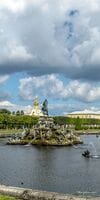The Upper Garden is one of the most beautiful and visited parks in St. Petersburg.
The Upper Garden is part of the Peterhof Palace and Park Ensemble in Peterhof, which also includes the Grand Peterhof Palace and the Lower Park, which, because of the abundance of fountains, it is also called "Fountain Park". Learn more about the Lower Park…
The entire complex of the ensemble together represents a large-scale work of landscape art, architecture and history.
On the territory of the Upper Garden there are: alleys and paths for walking, stalls with gazebos and sculptures, a rose garden, Petrovsky pharmacy garden, ponds and pools with fountains.
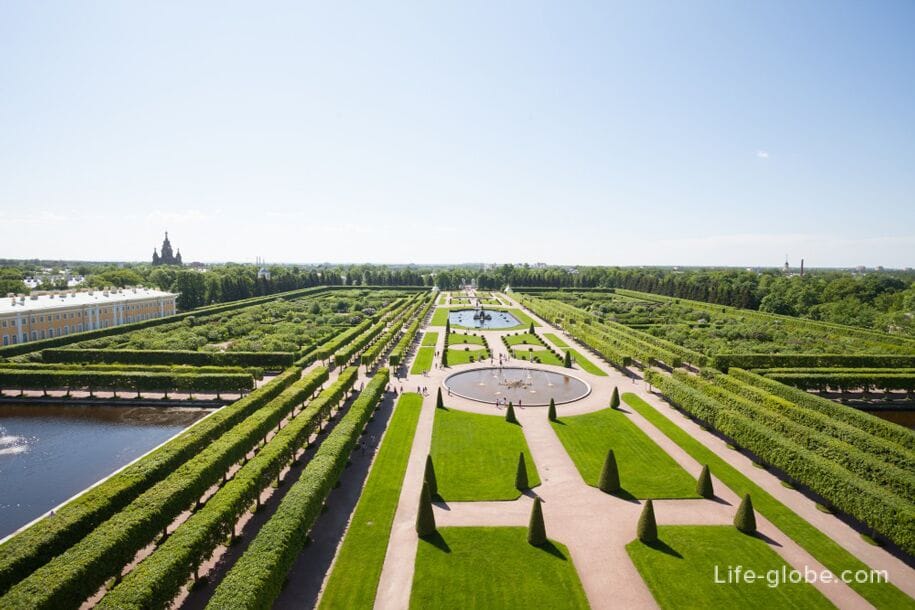
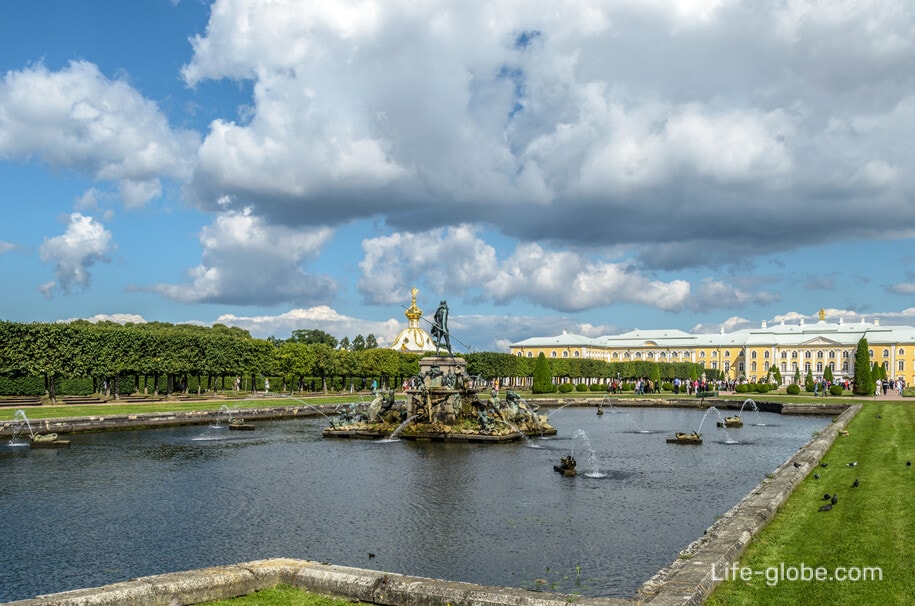
The formation of the Upper Garden, as well as the Grand Palace and the Lower Park, dates back to the reign of Peter I, according to whose idea, as well as sketches and drawings, the Peterhof palace ensemble was created - the only seaside residence of the Russian emperors.
The formation of the Upper Garden took place in 3 stages:
- 1st stage - in 1714-1724 by architects I. F. Braunstein, J.-B. Leblon and garden master L. Garnichfelt;
- Stage 2 - in 1733-1739 by architects I. Ya. Blank, I. P. Davydov and sculptor B. K. Rastrelli;
- Stage 3 - in 1754-1760 by the architect F. B. Rastrelli.
During the history, including during the destruction of the Second World War, the decorative elements of the garden were destroyed and lost. However, they were later restored according to drawings, photographs and drawings, which allows us to see the architectural and landscape harmony and trace the history of the garden today.
The upper garden has an area of 15 hectares, the layout of regular parks and is located on the terrace in front of the southern facade of the Grand Palace, so it is perceived primarily as the main entrance to the former imperial residence. Learn more about the Grand Peterhof Palace with its halls and museums…
View of the Grand Palace from the Lower Park
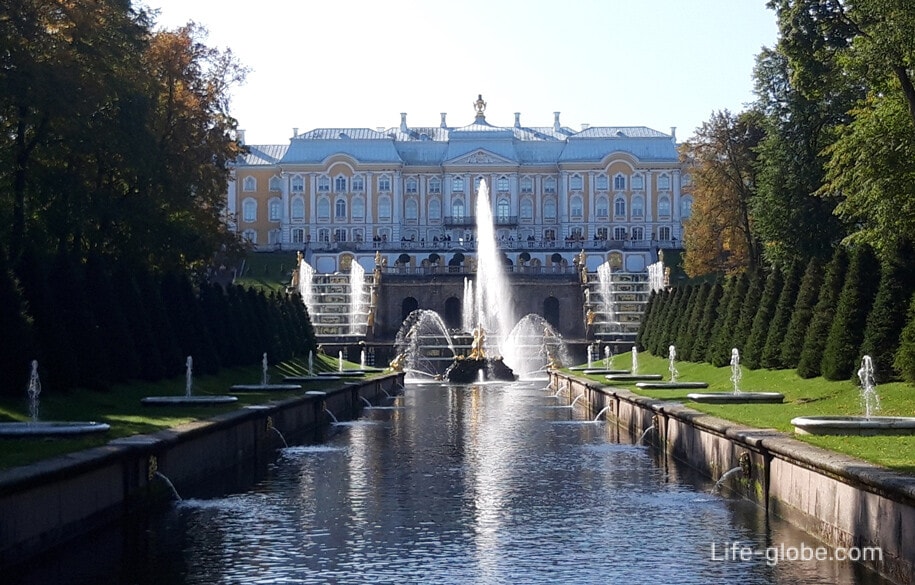
During the life of Peter I, the ceremonial character of the Upper Garden was combined with the economic purpose - vegetables, fruits, herbs and medicinal plants were grown in the garden, and fish were bred in man - made ponds that served as water storage for the fountain system of the Lower Park.
In the 30s of the 18th century, the Upper Garden acquired an exclusively ceremonial appearance. In the garden, beds were removed, trellis gazebos and gilded sculptures were placed in the stalls, and fountains were installed in the pools. In the middle of the 18th century, in connection with the reconstruction of the Grand Palace designed by F. B. Rastrelli, the garden was slightly expanded and surrounded on three sides by a fence with stone pillars and bars. The main entrance from the side of the Peterhof Road was decorated with gates with massive pylons and wrought-iron gates.
Today, the Upper Garden is an example of a restored regular park building of the 18th century, as well as a great place for walking and relaxing for everyone. Entrance to the park is paid.
In the park there are alleys framed by lime trees, green galleries-bersos, there are green lawns framed by thuja in the form of balls and cones, as well as fruit trees.
The garden features ponds and sculptures, including marble statues of the garden god Vertumna, the fertility goddess Pomona, the warm wind god Zephyr, and the spring goddess Flora, which adorn the garden's parterres. These sculptures are the works of the 18th-century Italian sculptor Antonio Bonazza.
In Boskety, a rose garden has been laid out near the eastern pond, and the Petrovsky pharmacy garden has been revived near the western pond, where St. John's wort, oregano, echinacea, lemon balm, mint and other medicinal herbs are grown.
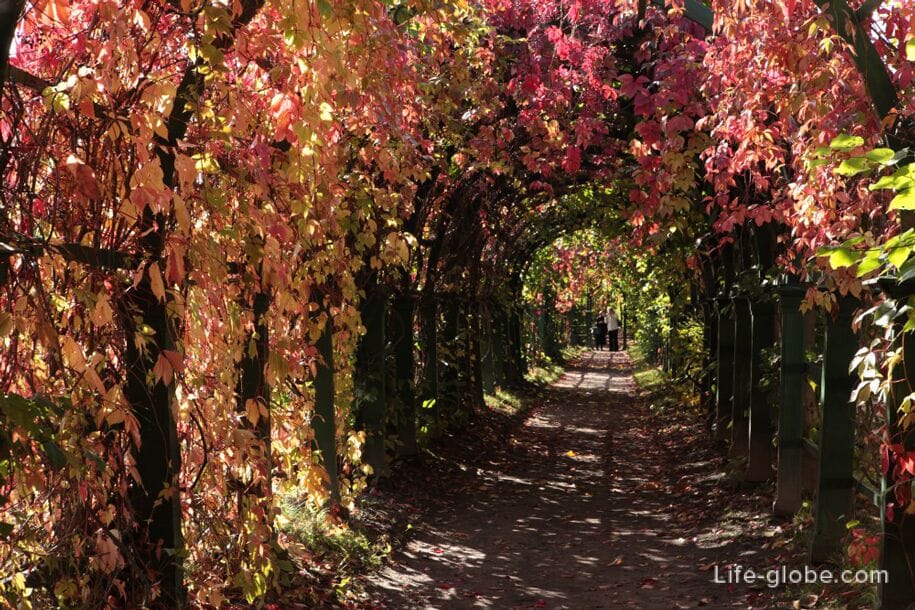

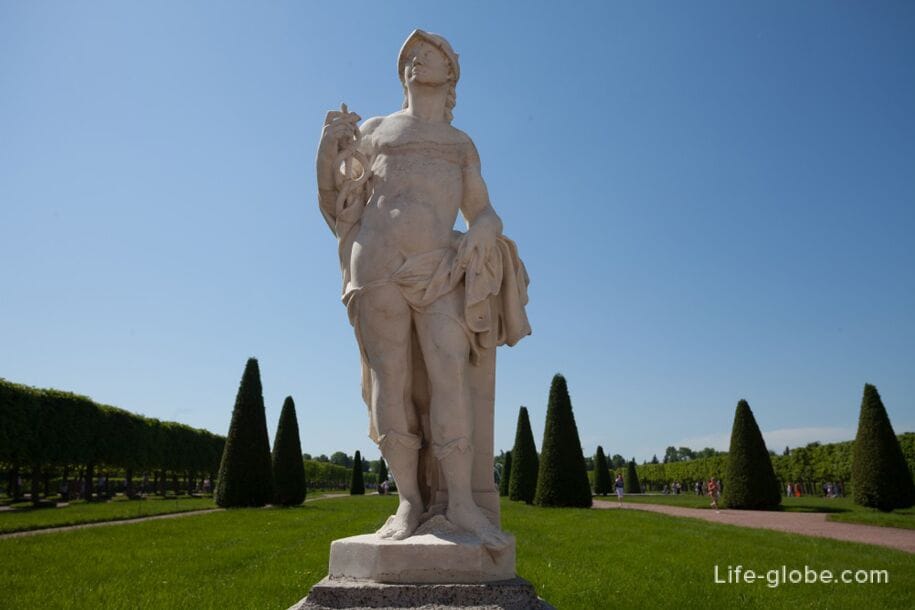

Fountains of the Upper Garden of the Grand Palace in Peterhof
The upper garden is decorated with five fountains.
Neptune Fountain
The fountain "Neptune" is the compositional center of the Upper Garden and is installed on a high granite pedestal in the center of a large rectangular pond.
The fountain "Neptune", representing a composite ensemble, was cast in the city of Nuremberg (Germany) by the Nuremberg master sculptors X. Ritter, G. Schweiger and I. Eisler in 1660-1668 as a memorial for peace after the end of the Thirty Years ' War. A sculpture titled Neptunbrunnen (Neptunbrunnen) was installed on the Central market square of the city of Nuremberg (Hauptmarkt / Hauptmarkt), but for the operation of the fountain in the local rivers is not enough water, and the fountain sculpture was dismantled and stacked in the barn; yet, in 1797, the city sold the Neptune fountain to the Russian Emperor Paul I, who sent the fountain in the town of Saint-Petersburg and established his Imperial summer residence in Peterhof. The fountain was slightly modified to fit the classical style.
The Neptune Fountain was installed in the Upper Park of the Grand Palace of Peterhof in 1799 on the site of the lost beauty of the "Chariot of Neptune".
During the Second World War, the fountain was dismantled and taken to Germany. In 1947, the sculpture group was again brought to Peterhof and installed in its former place.
The bronze figure of the sea god Neptune is depicted with a crown on his head and a trident in his hand. The granite pedestal of the statue is decorated with four gushing mascarons. The pedestal is surrounded by hippocampal riders (sea winged horses) and conch-trumpeting newts on winged dragons and dolphins. In addition, the pond itself is decorated with figures of dolphins, from the mouths of which trickles of water flow.
The fountain "Neptune" is one of the most outstanding works of Western European art of the 17th century.
On the south side of the fountain pool is a bronze replica of the ancient statue of Apollo Belvedere.
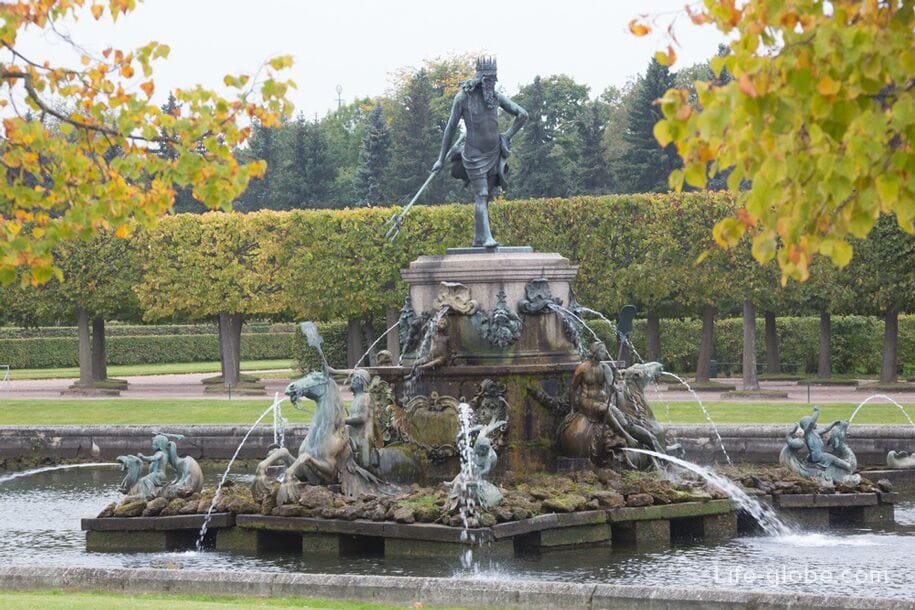


Fountain "Mezheumny"
Behind the main entrance to the Upper Garden, in a circular pool, there is a fountain "Mezheumny" or "Indefinite".
The name of the fountain is due to the fact that its sculptural decor was often changed. The pool, created in the 1730s, originally featured the multi-figure lead sculpture group "Andromeda". By the end of the 18th century, the sculpture was replaced by a composition with a sea dragon and four dolphins. In the 19th century, the fountain decor was changed twice, and, in the end, during the post-war restoration, the bronze sculpture of a sea dragon and four dolphins, which the fountain is decorated with today, and which were created from the image in the album of the 18th century, returned to their places.

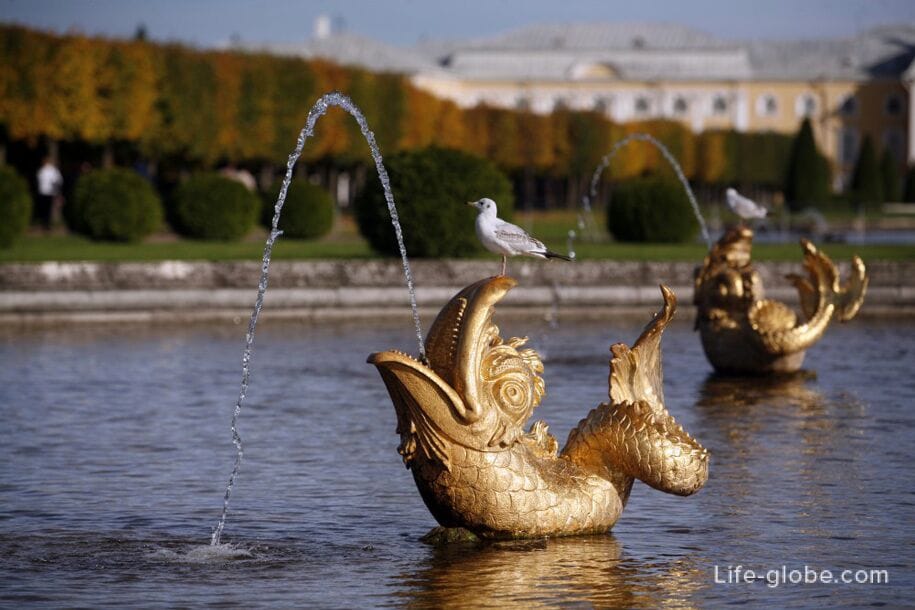
The Oak Fountain»
The fountain is located near the Grand Palace, on the central axis of the Upper Garden.
The fountain is set in a circular pool, on a tuff island, made in the form of a starfish. In the center of the fountain is the sculpture "Cupid wearing a mask", made in 1809 by the sculptor D. Rossi. Amur is surrounded by six dolphins, placed on the rays of a star, from the mouths of which gush thin streams of water.
Initially, in addition to the sculpture "Amur", in the center of the fountain composition was a lead gilded oak, surrounded by newts and dolphins-hence the name "Oak". The tree created by B.K. Rastrelli was removed from the pool in the middle of the 18th century and subsequently used in the Lower Park when creating the "Oak" firecracker fountain.
The Oak Fountain is also known for its tradition, which originated from the time of the Empress Elizabeth Petrovna and has been revived today. Every year on August 14 (1 in the old style) in the pool of the fountain, the ritual of water consecration and sprinkling with holy water of the regimental banners of all military units located in Peterhof is performed.
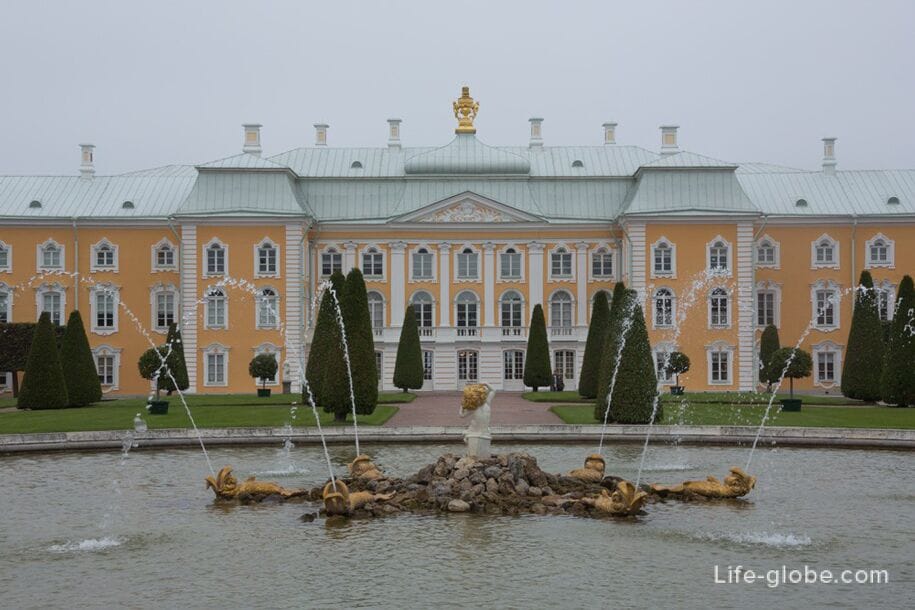
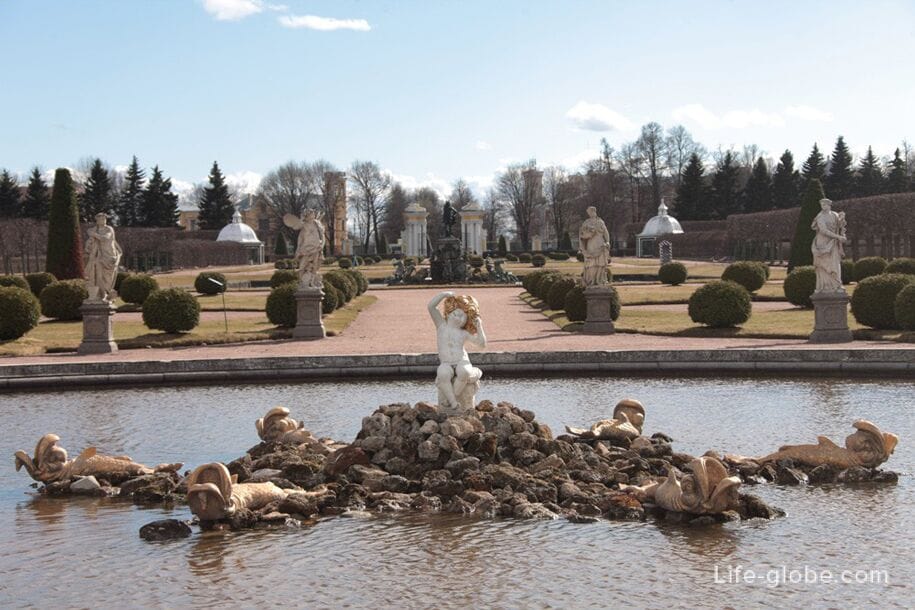
Fountains of Square Ponds
The square ponds of the Upper Garden were dug in 1721 and laid out near the Grand Palace, on both sides of the Oak Fountain.
The ponds were used as water storage for the fountains of the Lower Park and at first did not have a fountain decoration.
In 1737, lead-gilded sculptural compositions based on the models of B. K. Rastrelli were installed in the ponds. The western pond was decorated with the group "Diana's Bathing", depicting the goddess of hunting surrounded by nymphs, dogs and dolphins. And in the eastern pond, the figures of the river god Alpheus and the nymph Arethusa were installed, surrounded by sirens and dolphins.
At the beginning of the 20th century, the pools of the ponds were decorated with marble sculptures of the 18th century "Spring" and "Summer", and during the post-war restoration, their place was taken by statues of Venus of Italy and the young god Apollo. The dolphins for the fountains were cast in bronze according to the preserved samples.
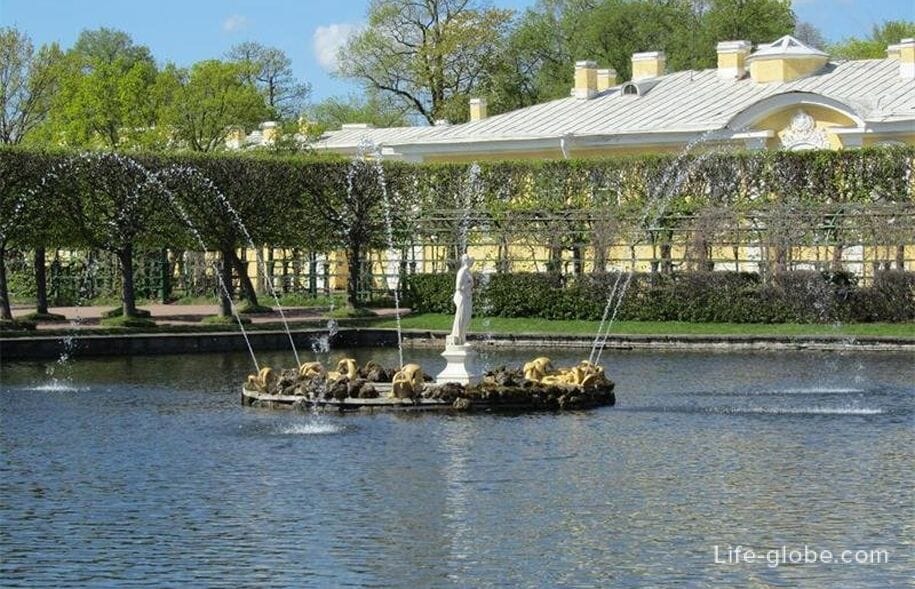
Practical information
The upper garden of the Palace and Park Ensemble "Peterhof" belongs to the State Museum-Reserve "Peterhof".
The fountains of Peterhof are closed for the winter (do not work) - from about the middle of October until the 20th of April.
Entrance to the Upper Garden is paid.
Tickets to the Upper Garden, the Grand Peterhof Palace, the Lower Park and the ensemble's museums can be purchased at the ticket offices located directly near the park's entrances or online in advance on the official website.
The opening hours of the garden, park and museums, as well as the conditions for visiting and the cost of tickets, are recommended to check on the website of the State Museum-Reserve "Peterhof": peterhofmuseum.
You can visit Peterhof with one of the excursions
All the ways to get to Peterhof from St. Petersburg (the airport and the city center) can be found here →
Near the Palace and Park Ensemble "Peterhof" you can stop
The 4-star Novy Peterhof Hotel features a restaurant, a bar, parking, a tour desk, a spa area with an indoor pool, a gym, a steam bath, a Finnish cedar sauna and an aroma sauna.
The rooms are decorated in a modern style and feature a TV with satellite channels, free Wi-Fi, a safe, bathrobes and slippers, a hairdryer and free toiletries. Some rooms have a seating area.
The room rate can include: breakfast, breakfast + dinner or breakfast + lunch + dinner. Link to the hotel
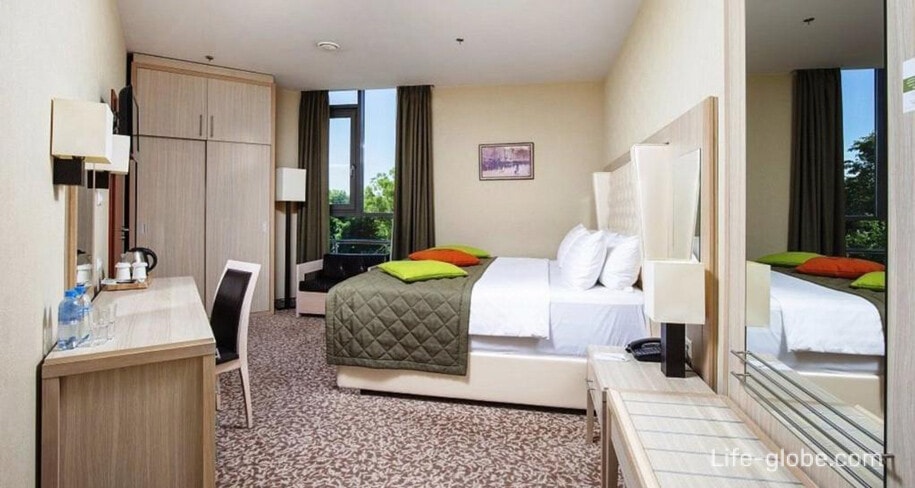
EGO-LOFT Apartment (Holgin Pond) they offer views of the lake and the city.
The apartmentfeatures air conditioning, a balcony, free Wi-Fi, a flat-screen TV, a washing machine, a bedroom, a kitchen with a dishwasher and a microwave, and a bathroom with a hairdryer and free toiletries. Link to the apartment
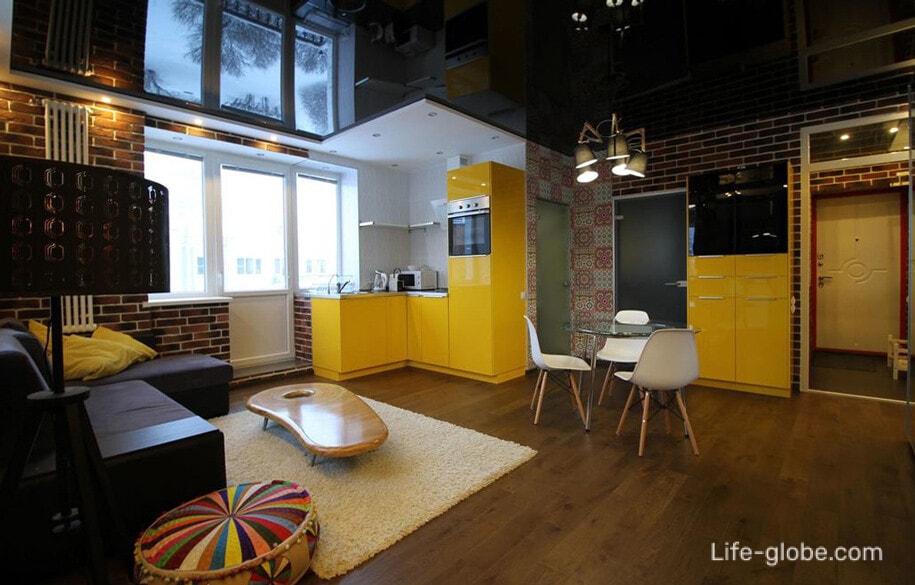
Severnaya Venezia Apartment с features a balcony with lake views, free Wi-Fi, a children's playground, a garden and a shared lounge.
The apartmentfeatures a bedroom, a flat-screen TV with cable channels, an equipped kitchen with a microwave and a refrigerator, a washing machine, and a bathroom with a shower. Link to the apartment
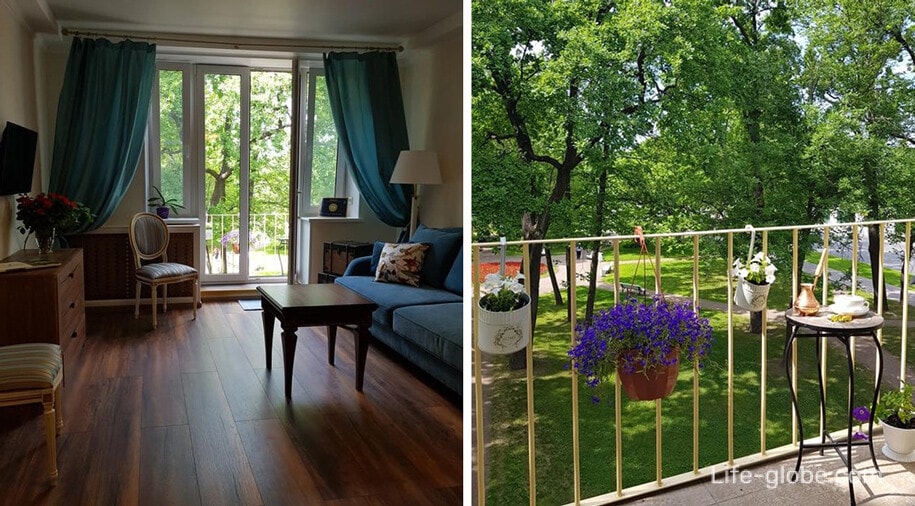
All accommodation facilities in St. Petersburg, including in the city center and in Peterhof, can be viewed and booked here




